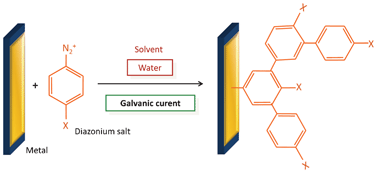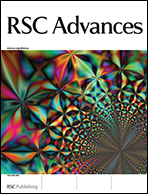Based on the literature, the reduction of diazonium salts (either by electrochemistry, photochemistry or chemistry) leads to a covalently grafted polyphenyl-like coating. We describe here a new diazonium-based redox process that leads to thick and strongly adherent coatings similar to the ones obtained by electroreduction, but without any electrochemical setup (potentiostat, electrochemical cell, reference electrode, computer etc). That new process is simply based on the galvanic current generated by the association of two different metals. An ohmic contact between the two metals immersed in an electrolytic solution creates a current flow from the less noble metal (anode) to the more noble one (cathode). We take advantage of this phenomenon to build grafted polyphenyl-like coatings on various conductive substrates. This preliminary study aims at answering the question: how does this new process work? To achieve this study, the different parameters of the process are examined: the nature of the cathode and the anode, influences of the diazonium salt, the solvent and the temperature. The resulting grafted coatings are analyzed by IR-ATR, contact angle and profilometry.

You have access to this article
 Please wait while we load your content...
Something went wrong. Try again?
Please wait while we load your content...
Something went wrong. Try again?


 Please wait while we load your content...
Please wait while we load your content...